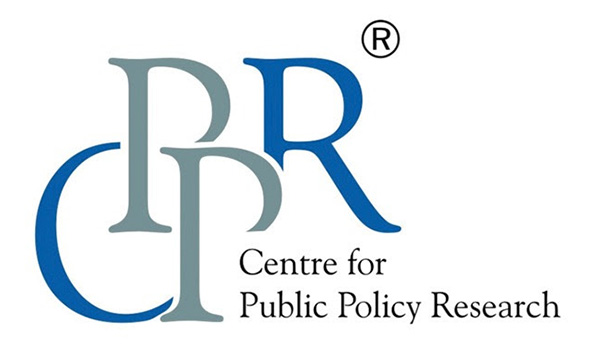Articles

Foreign Debt of India Inc and Currency Risk
November 12, 2015
Fiasco of engineering colleges in Kerala
November 24, 2015Ambitious Government, Aiming for Realising Idle Gold
With the motto of realizing the idle gold reserves for productive purposes the Government of India recently adopted three gold schemes. It is estimated that there is 20000 tons of gold (to some experts, 22000 tons worth USD$ 800 billion i.e. 5.24 lakh crores of rupees or 39 per cent of GDP) kept idle at households and temples in India. At the same time India imports 800-900 tons of gold per year which mounts up the current account deficit, a problem the government is trying to contain. The new gold schemes would help to convert the unproductive gold into productive filed so that import bill can be lessened and thereby current account can be addressed.
The three Gold schemes are Gold Monetisation Scheme (GMS), the Sovereign Gold Bond Scheme (GSBS), and the Indian Gold Coin Scheme (IGCS).They were introduced on November 5, 2015.
Gold monetization Scheme (GMS)
This scheme is nothing but the revamping of Gold deposit scheme introduced in 1999 and Gold Metal Loan scheme. The three objectives of the scheme are:
- To mobilize the gold held by households and institutions in the country.
- To provide a fillip to the gems and jewellery sector in the country by making gold available as raw materials on loan from the banks.
- To be able to reduce reliance on import of gold over time to meet the domestic demand.
The minimum quantity of gold that can be deposited under GMS is 30 grams of 995 fineness. There is no maximum limit for depositing under this scheme. Gold can be deposited in any form (bullion or jewellery). It can be deposited as short-term, medium term and long term forms. If it is for a period of 1- 3 years it is considered as short term deposit. The period of medium term is 5-7 years. When the deposit is for a period of 12- 15 years it is treated as long term investment. The bank will pay an interest for the gold deposits.RBI has allowed banks to fix their own interest rate similar to savings bank interest rate. The short term deposit will fetch 2.25 per cent interest while the long term 2.5 per cent interest. It means that the scheme will help the gold depositors to fetch returns for whom the metal served as a passive investment earlier.
One salient feature is that premature withdrawal is possible but interest rate will be less or there will be a penalty in the form of deduction in the interest rate. The GMS hopes to alleviate the need to hold physical gold or improve the productivity of gold. The scheme is crucial to unearthing gold hoards. Another advantage of this method is that the agencies like banks, government etc would not be exposed to a price risk.
Certain problems are associated with gold monetization scheme. Any gold scheme, particularly that of monetization, is confronted with three issues such as standardization, purification, and certification. For purification, it has been mentioned that there are 350 Hallmarking centres certified by Bureau of Indian Standards (BIS) in India. The centres will act as purity testing centres for the GMS but the problem is that though they are spread across various parts of the country , the number is not sufficient to cater the demands of people. There are only 39 centres in Kerala. That is why it has been aptly mentioned in the scheme that it requires a vast set up of infrastructure facilitation easy and secures handling of gold. Hence it will be possible to launch it initially in the selected cities only.
Another problem may be the discontent of the customer when the test center declares the approximate amount of pure gold in the ornaments or coins they bring to deposit. There is less chance that individuals place their gold with banks because they would not want to have their gold jewellery melted down for one to three years .Moreover, they will lose substantial value on melting down the gold. The concern is the likely loss of 20-30 per cent of the weight of jewellery as it is melted at certified centres . Same phenomenon will be repeated when it is converted back into jewellery on maturity. Temples and Trusts, who are the holders of large quantities of gold bars may deposit their huge stocks for longer periods provided interest rate is above 2 per cent. Even if the customer agrees with this and consequent of process of melting the gold and removing the dirt, he will have to follow the KYC norm which is another barrier for the customer. Investors will have to disclose their permanent account number, registered with the income tax department, if the value of gold is worth more than Rs. 50,000. Interest earned on deposit is taxable as per the Income tax Act.
Sovereign Gold Bond Scheme (SGBS)
Under this scheme, people buy a bond that is linked to the weight gold in rupee terms. It is an alternative investment to physical gold. Its sale is restricted to resident Indian entities. The bond will be issued by RBI on behalf of government of India. On maturity, the investor receives the equivalent of face value of gold in rupee terms.
The cap on bonds that may be bought by an entity would be at a suitable level, not more than 500 grams per person per year. The bonds will be issued in denominations of 2, 5, and 10 grams of gold or other denominations and hence the minimum cap is 2 grams. It is issued for a period of 5 to 7 years. The government may pay an interest rate of 2.75 per cent. The interest will be payable every six months. The government aims to mobilize Rs 15,000 crores by way of this scheme before November 20, 2015.
There is a provision for redeeming the bond at the end of five years and there would be a secondary market. The bonds can be used as collateral for loans. This scheme may persuade the holder of physical gold to switch over to this scheme. The interest earned on the gold deposit is taxable per the Income tax Act 1961 and the capital gains tax will also be applicable.
The current issue price is Rs 2,684 per gram. I.e. the price of a single bond represents the price of gold per gram. It is higher than the prevailing market price and hence customers will be reluctant to invest in it.
Gold Coins
The Indian Gold Coin scheme(IGCS) plans to divert the demand from imported coins to Indian coins. The coin will be the first ever national gold coin minted in India. It will have the national Emblem of Ashok Chakra engraved on one side and Mahatma Gandhi on the other side. Coins are extremely pure weighing 24 karat with 999 fineness i.e. 99.9 per cent pure which is highest level of purity.
It will use the GMS for sourcing the gold for producing coins. Naturally, it is contingent on the GMS. The coins will be available in denominations of 5 and 10 grams. 20 grams bar bullion will be available and hence it is called Gold Bullion Scheme—a variant of Gold Coin Scheme and considered by some as the fourth gold scheme. Coins are hallmarked as the BIS standard. Government would launch 15,000 coins of 5 grams, 20,000 coins of 10 grams and 3750 gold bullions in the initial launching phase. Metals and Minerals Trading Corporation of India (MMTC) being the largest importer of gold and largest bullion supplier, its outlets are designated as gold coin selling centres. Banks (SBI,ICICI, Axis Bank etc), Jewellers (trusted jewellery brands), and e-commerce company(Amazon, snapdeal etc) are other centres from where individuals can purchase gold coins.
It must be noted that KYC documents which includes Voter ID, Aadhar card or PAN etc will have to be produced while purchasing the gold coin.
Evaluation
No doubt if the schemes are successful, India’s need of importing the gold will be reduced. It is expected that the deposit gold will be re-circulated in the economy and thereby the import will be arrested. India being one of the top countries heavily importing gold, the import bill can be lessened due to the arrest of importing it. The new schemes can help meet the future demand for gold and thereby keeping imports and current account deficit in check. India’s gold imports have topped 15000 tons during 1997-2015.The point is that one-third of the imports i.e. 5000 tons were in the form of coins, bars or biscuits. This gold worth Rs 11.5 lakh crore ($160 billion) is precisely the target of Govt’s gold schemes.
Under the GMS, private gold becomes available with banks for sale to jewelers or to other agencies. When the banks sell the gold and the price of gold rises before maturity, the banks will have to give more money to the depositor. The money the banks have realized through selling the gold will be used to lend it to the borrowers at a higher rate of interest ( at least 10 %) but they have to pay only 2.5 per cent rate of interest to the gold depositor. If it works properly, the margin is sufficient to make profit and to protect against price rise.
In the case of bond, it is being in the paper format, it does not carry any security problems which are likely to happen in holding the physical gold. Under the bond scheme, the 557 tons of gold in RBI’s vaults back the bond it sells. As it promises gold on a fixed date in the future, buyers need not buy physical gold which will dent the imports of gold. As a result gold prices in the international market are expected to fall due to low demand. At low prices, RBI can buy gold and stock it. Besides, RBI has to pay less on maturity . If the price rises, RBI can buy gold in forward market and hedge against losses. Currently RBI earns nothing on its gold stocks but it will start earn through bond scheme.
In respect of coins it may be surprised to see the huge difference between the rate of banks and jewelers. Banks usually sell it at a high price and the absolute returns from the gold coins from banks may be higher.
Conclusion
The three schemes introduced by RBI can be seen as part of the gold policy of the government. From time to time RBI reviewed the issues relating to gold policy. Once it was intended to wean people away from gold and to regulate supply-demand forces, now it tried to reduce the smuggling of gold and restrict import. The present schemes are reforms which have the potential to transform; it has the potential to change the gold habits of the people and to fetch modest interest without holding gold on hand. The schemes are designed in such a way as to facilitate deposit of gold as well as gold bond, as a result of which gold reserves will be monetized into more productive use and also curtail imports. There is a general impression that the government gets set to launch its gold monetisation and bond schemes at a right time as falling gold prices have been impacting gold consumption in India.
The success of these schemes will depend on the extent of the idle gold extracted out into the market to add to the supply. For this the schemes should be mutually supportive. The feasibility of GMS would be on the collected gold being lent out to users of gold who would pay much higher interest rates and reduce imports. While these schemes are aimed at increasing the domestic supply of gold, they are not expected to impact domestic gold prices immediately. The impact on growth will be also positive. If the demand for physical gold comes down over the long term, it can possibly increase flow savings into the economy, including capital market. Better use of the gold stock and the direction of funds raised from auctioned gold deposits towards investment could ultimately result in higher growth. It is argued that if there is 10 per cent deposit of gold reserves over five years, imports and current account deficit will be contained by an average 0.2 percentage points of GDP every year.
Currently the monetization scheme could collect 400 grams only within two weeks since its inception and hence it is a total failure in that respect. We should be little more patient for the success of the schemes. The authorities should not abandon the programme when it finds that the schemes are not able to attract deposits and investment. Continuous awareness prograame for two years through various strategies will help to make it success. The authorities should take all steps to convey the meaning of the words” Not let your gold become dead money”, as expressed by Prime Minister. Steady and cautious approach, allowing reasonable period of time to work, will definitely lead to the success of gold schemes, at least gold bond scheme.
* The Author is Chief Economist at CPPR. Views are personal.
Dr Martin Patrick is Chief Economist at CPPR. He holds a PhD in Applied Economics from the Cochin University of Science and Technology (CUSAT), Kochi and also had a post-doctoral training at Tilburg University, Netherlands. Presently, he is a Visiting Fellow at Indian Maritime Institute, and Xavier Institute of Management and Entrepreneurship, Ernakulam.



